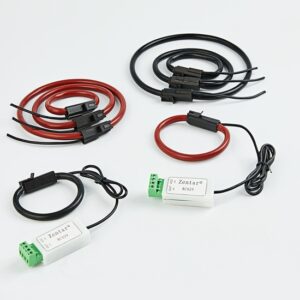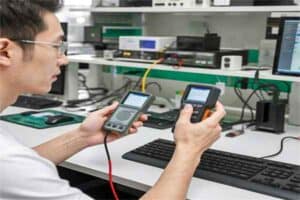As the world’s largest consumer of new energy electric vehicles, new energy electric vehicles are developing rapidly, and the safety of electric vehicle charging piles is a top priority: whether the electric vehicle charging pile can avoid random plugging and unplugging during the charging process.
The accident caused by the charging gun, whether it can be automatically powered off after charging, whether it can be insulated and avoid electric shock in rainy days, this is the question of many electric vehicle users at present, what kind of electric vehicle charging pile can ensure the new energy vehicle owners Safe during charging.
1.This artical discusses and analyzes the application analysis of leakage protection in electric vehicle charging piles.
According to domestic and foreign data statistics, the safety factor of electric vehicle charging piles that meet the national requirements is higher than that of home appliances. Not only will there be no accidents when people touch the charging piles, but even in extreme situations such as wind, rain and lightning strikes, the charging piles can still be guaranteed. Safety. How to analyze the leakage protection in the electric vehicle charging pile is discussed and analyzed in this paper.1. Protection functions that electric vehicle charging piles should have
Under the national standard, the electric vehicle charging pile should have the protection function. Electric vehicle charging piles should have protection devices such as overvoltage and undervoltage protection, lightning protection, output short-circuit protection, leakage protection and overcurrent protection. Electric vehicle charging piles have leakage protectors. When the electric vehicle charging pile is in standby or charging In case of leakage, it will trip in time to protect the personal safety of customers. The electric vehicle charging pile has an emergency red emergency button. In an emergency, pressing the emergency button will instantly power off the pile to protect personal and property safety.
2. Classification of the generation of leakage current
Generally, leakage current is divided into four types: semiconductor element leakage current, power leakage current, capacitor leakage current and filter leakage current1. Leakage current of semiconductor components
The very small current that flows through the PN junction when it is turned off. D-S is forward biased, G-S is reverse biased, and after the conductive channel is opened, current will flow from D to S. But in fact, due to the existence of free electrons, free electrons are attached to SIO2 and N+, resulting in leakage current of D-S. Figure 1.1.1 Leakage current in inverter with IGBT switch
2. Power leakage current
In order to reduce the interference in the switching power supply, according to the national standard, an EM filter circuit must be provided. Due to the relationship of the EMI circuit, there is a small current to the ground after the switching power supply is connected to the mains, which is the leakage current. If it is not grounded, the shell of the computer will have a voltage of 110 volts to the ground, and it will feel numb when you touch it with your hands, and it will also affect the work of the computer.
3. Capacitor leakage current
The capacitor medium cannot be absolutely non-conductive. When a DC voltage is applied to the capacitor, the capacitor will have a leakage current. If the leakage current is too large, the capacitor will be damaged by heat. Except for electrolytic capacitors, the leakage current of other capacitors is extremely small, so the insulation resistance parameter is used to represent their insulation performance; while electrolytic capacitors have large leakage current, so the leakage current is used to represent their insulation performance (proportional to capacity).
4. Filter leakage current
The leakage current of the power filter is defined as the current from the filter housing to any end of the AC incoming line under the rated AC voltage.
If all the ports of the filter are completely insulated from the case, the value of the leakage current mainly depends on the leakage current of the common mode capacitor CY, that is, mainly depends on the capacity of CY.
Due to the size of the leakage current of the filter, which is related to personal safety, all countries in the world have strict standards for it. For 220V/50Hz AC power supply, the leakage current of the noise filter is generally required to be less than 1mA.
3. Principle of system leakage detection
Most technicians are very familiar with GFCl sensors for ground fault current detection,
In a three-phase system, a chip RCMU (leakage current monitoring unit) is placed on the busbars, and the most important thing is that all three busbars randomly pass through the middle wire hole of the RCMU. The system shown in the figure has no neutral line and is a three-phase three-wire AC system. If it is a three-phase four-wire system, if the neutral wire does not carry current, the neutral wire does not need to pass through the RCMU.
Say one is connected to a 480 277vac system with a 10A load and the RCMU will measure it simultaneously. According to Kirchhoff’s law, incoming and outgoing currents cancel each other out. The current vector sum of the three bus bars should be zero. As can be seen from the figure, without considering the direction: that is, the leakage current value on the line of the system is 1A. RCMU is based on the design principle of chip type. The difference from passive transformer is that it can detect different leakage components, and belongs to Type-B RCMU.
Having said that, briefly review the leakage current types.
1) AC type earth leakage protector
The type leakage protector is developed and designed for the power frequency sinusoidal leakage current, and can reliably protect the sinusoidal leakage current that is suddenly applied and slowly rising.
2) Type A leakage protector
In addition to the reliable protection of the sinusoidal leakage signal, the leakage protector can also reliably protect the leakage signal containing the pulsating DC component.
3) Type B leakage protector:
Type B leakage protector can reliably protect sinusoidal AC signals, pulsating DC signals and smooth signals




